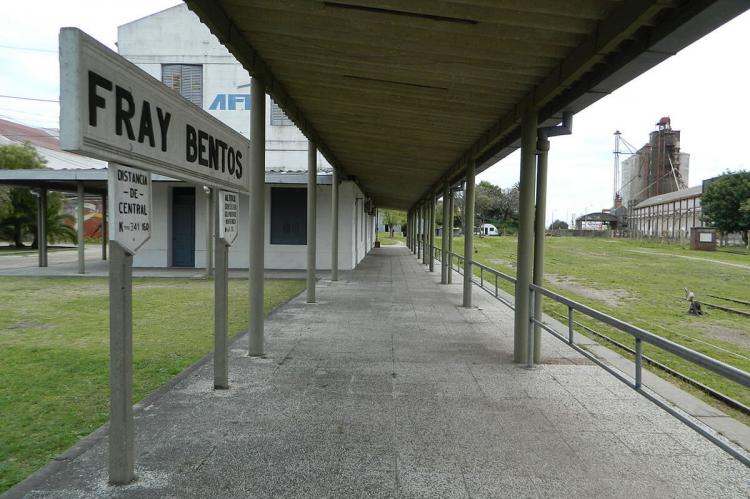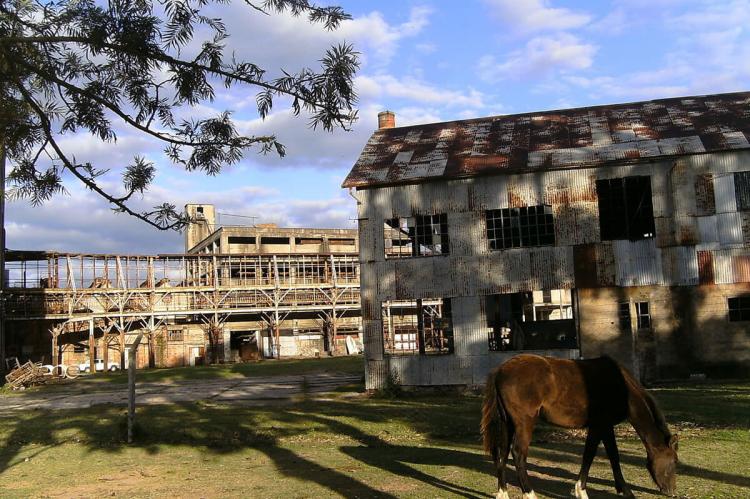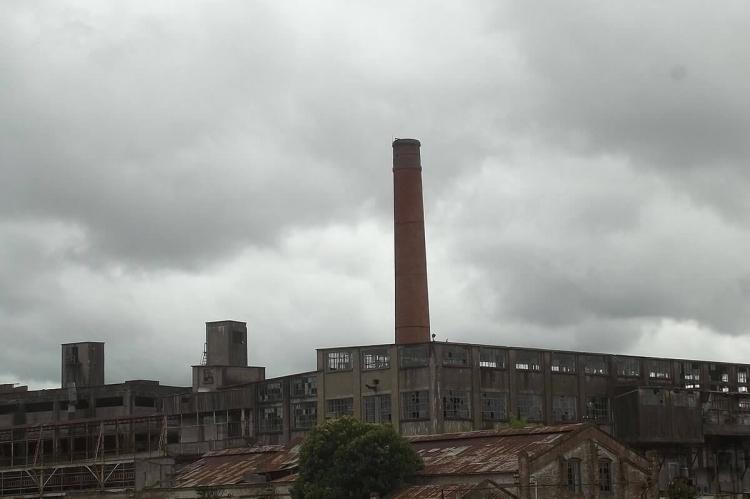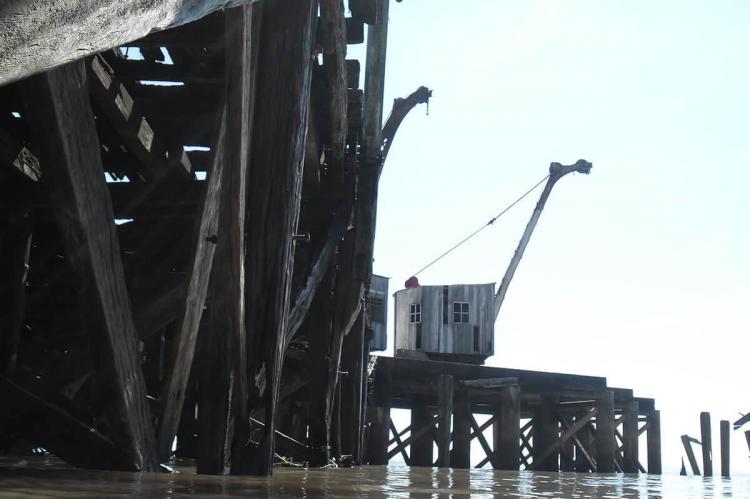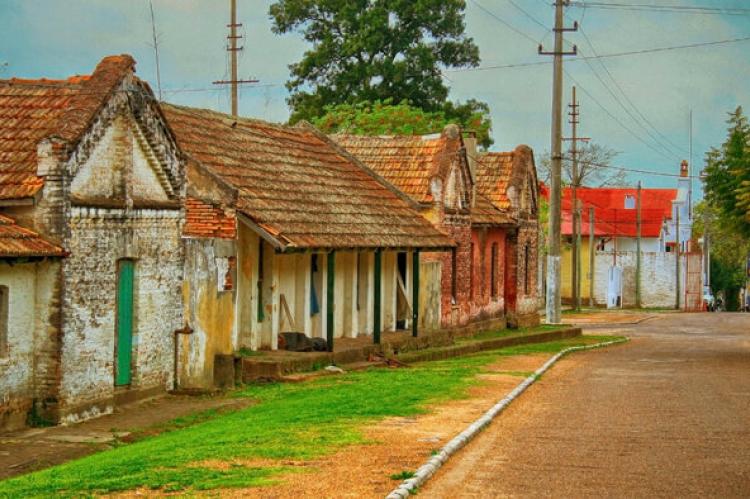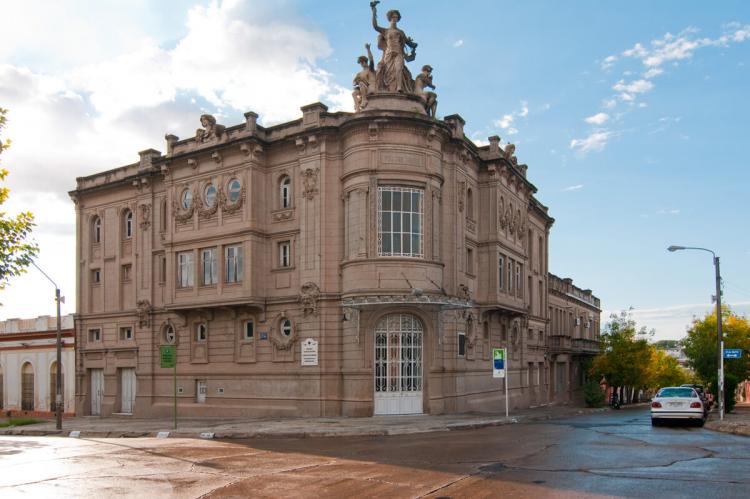Fray Bentos: Fray Bentos Industrial Landscape (Uruguay)
Fray Bentos, the capital city of the Río Negro Department in southwestern Uruguay, is a charming blend of industrial heritage, cultural vibrancy, and natural beauty. The Fray Bentos Industrial Landscape, a UNESCO World Heritage Site, is a remarkable testament to Uruguay's industrial heritage.
Fray Bentos
Fray Bentos, the capital city of the Río Negro Department in southwestern Uruguay, is a charming blend of industrial heritage, cultural vibrancy, and natural beauty. Once a bustling industrial center renowned for its meat extract and corned beef production, Fray Bentos today exudes a unique character that captivates visitors with its rich history and captivating ambiance.
The story of Fray Bentos is intrinsically intertwined with the rise and fall of its industrial giants. In 1863, the establishment of Liebig's Extract of Meat Company marked the beginning of an era of prosperity and transformation. The company's success attracted other industrial ventures, including the Anglo Meat Packing Company in 1883, which established the world's largest meatpacking plant. These industries propelled Fray Bentos to global prominence, shaping its identity and leaving an indelible mark on its landscape.
The relics of Fray Bentos' industrial past are still evident in its architecture, with towering chimneys, sprawling warehouses, and grand factory buildings dotting the cityscape. Now weathered and repurposed, these structures serve as poignant reminders of the city's industrial heritage, whispering tales of innovation and enterprise.
Fray Bentos embraces a rich cultural tapestry influenced by its diverse immigrant communities and the legacy of its industrial past. The city's streets echo candombe rhythms, a Uruguayan Afro-Uruguayan musical tradition, while its theaters and museums showcase local artistic talents and historical artifacts.
Encompassed by the meandering Uruguay River and framed by rolling hills, Fray Bentos offers a serene escape into nature's embrace. Visitors can stroll along the riverfront, soaking in the tranquil views, or venture into the surrounding countryside, where lush greenery and hidden waterfalls await exploration.
Points of Interest
-
Frigorífico Anglo del Uruguay meatpacking plant: This former meatpacking plant, now a World Heritage Site, is a testament to the city's industrial past. Visitors can tour the plant's ruins and learn about its history.
-
Barrio Anglo: This historic neighborhood was once home to the Frigorífico Anglo del Uruguay meatpacking plant workers. Today, it is a charming district with colorful houses and narrow streets.
-
Technological University of Uruguay: The first campus of the Technological University of Uruguay is located in Fray Bentos. The university offers various engineering, technology, and business programs.
-
Fray Bentos History Museum: This museum is housed in the former Liebig's Extract of Meat Company factory. The museum exhibits artifacts and documents that tell the story of the industrial past.
Fray Bentos Industrial Landscape
The Fray Bentos Industrial Landscape, a UNESCO World Heritage Site, is a remarkable testament to Uruguay's industrial heritage. Located on the banks of the Uruguay River in western Uruguay, this sprawling complex was once a global hub for producing meat extract and corned beef. The site encompasses the Anglo Meat Packing Company plant, the Liebig's Extract of Meat Company factory, workers' housing, and the surrounding infrastructure.
The site is a testament to the ingenuity and innovation that characterized Uruguay's industrial era. The Anglo Meat Packing Company, established in 1883, pioneered the use of conveyor belts and assembly line techniques, revolutionizing the meatpacking industry. The Liebig's Extract of Meat Company, founded in 1863, employed advanced refrigeration techniques to preserve meat during processing, contributing significantly to the global food supply.
The Fray Bentos Industrial Landscape served as a symbol of Uruguay's industrial prowess during its heyday. At its peak, the Anglo Meat Packing Company employed over 5,000 workers, representing a significant portion of Fray Bentos' population. The company's products, bearing the Fray Bentos brand, became staples in households across Europe and beyond, solidifying the city's reputation as a global culinary hub.
The landscape is a powerful symbol of Uruguay's industrial heritage and the transformative power of industry. It is a testament to the ingenuity, innovation, and entrepreneurial spirit that once propelled the country to the forefront of the global food industry. Today, the site serves as a reminder of the enduring legacy of human endeavor and the captivating blend of history, culture, and natural beauty that defines the city of Fray Bentos.
